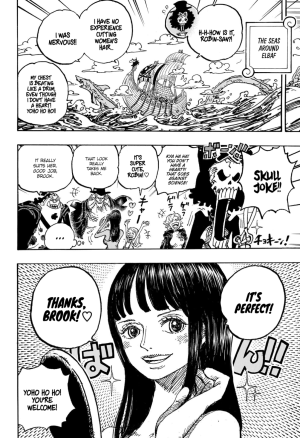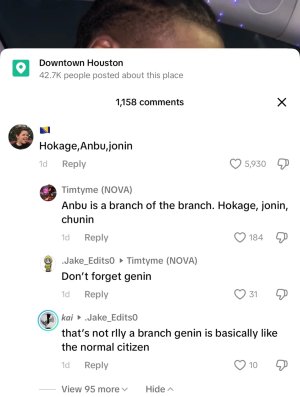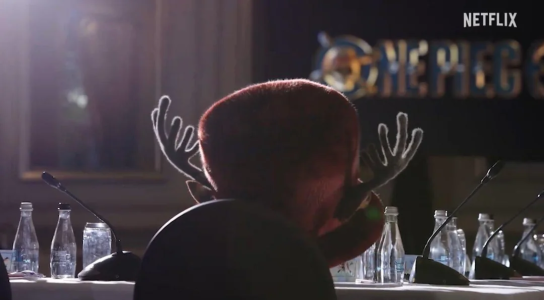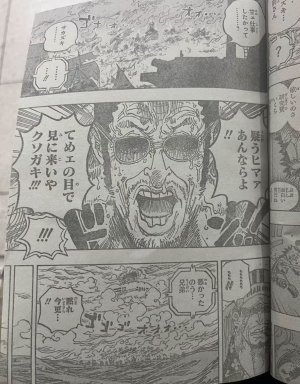http://onepiecepodcast.com/2015/01/20/chao-time-strange-case-of-dr-cabbage-and-mr-hakuba/
Written by
chaozek
Disclaimer: This article contains spoiler to the Dressrosa arc.
Since Law took over the last three articles, here’s an article dedicated to our resident pretty-boy swordsman Cabba — Cavendish:
The Name Behind Cavendish
In English, the name Cavendish can be considered a lengthy name, even in English, though his name can simply be pronounced in three syllables. Spelling his name in Japanese, however, requires quite a lot of characters due to the nature of the language, nine in this case (キャベンディッシュ
Kyabendisshu). Due to the length, Luffy would simply reduce his name to the similar sounding “Cabbage” (キャベツ
Kyabetsu), which only needs to be spelled with four characters in Japanese.
The name Cavendish is ultimately of Anglo-Saxon origin, originating from the town
Cavendish in Suffolk, England. Taking the name of the town as his surname, John Cavendish served as the judge of the town and became the ancestor of an English aristocratic family known as the
House of Cavendish. One branch of the family, whose members hold the title “
Duke of Devonshire,” serves as one of the wealthiest and most influential families in England.
Thomas Cavendish
One notable member of this family is
Thomas Cavendish, an English explorer and privateer known as “The Navigator.” Coming from a wealthy family, Cavendish inherited a large fortune at a young age and spent his early years in luxury. Similarly, the Cavendish in
One Piece is a noble from Rommel who became a pirate. Based on the clothing and architecture, Rommel has also apparently taken some inspiration from late 19th-century London, complete with its own version of the
Big Ben and pea soup fog.
At the onset of a war between Spain and England, Thomas Cavendish became a privateer and raided Spanish ships. He was determined to emulate a fellow privateer named
Francis Drake by raiding Spanish ships in the Pacific and circumnavigating the world. His first expedition was a complete success, having captured a Manila galleon filled with rich cargo. After the raid, Cavendish and his crew explored islands in Southeast Asia and collected information on the Chinese and Japanese coast. He returned to England on September 5, 1588, having accomplished his first journey before reaching the age of 28. Going by the historical reference,
One Piece‘s Cavendish may have some involvement with the two fictional nations Wano and Kano in future arcs, since they are based on Japan and China respectively. In addition, he may also have some connections to X Drake, or may encounter him in the near future.
His second expedition wasn’t as fortunate. After sailing to Brazil, Cavendish engaged in a battle with the Portuguese in
Vitorio, where he lost most of his crew. He later died somewhere in the Atlantic Ocean, having written a letter blaming his navigator for his ultimate demise.
Cavendish Square
Cavendish also shares his name with
Cavendish Square, a public square in Westminster named after
Henrietta Cavendish-Holles. It is smaller than the more well-known Trafalgar Square, also located in Westminster. Amusingly, Cavendish in
One Piece had also considered his popularity “overshadowed” by Trafalgar Law and his fellow Supernovae.
Dr. Jekyll and Mr. Hyde
The Strange Case of Dr. Cabbage and Mr. Hakuba
The aforementioned Cavendish Square is also one of the settings in the novella
Strange Case of Dr. Jekyll and Mr. Hyde, serving as the place of residence of the protagonist’s best friend — Dr. Hastie Lanyon. Described as the “citadel of medicine” in the novella, the square was an affluent district where the upper class lived, including the highly-respected Lanyon.
The novella follows the story of a doctor with a dissociative identity disorder, where two or more distinct personalities exist in one body. In this case, Dr. Jekyll’s alternative personality is the malevolent Mr. Hyde. The former is described to be a “well-made, smooth-faced man,” while the latter is described to be a sociopath who indulges himself in acts of evil and lu****l nature. Similarly, Cavendish is an elegant sword-wielding noble, while his alter-ego, Hakuba, is a psychopath who attacks anyone within his vicinity. While Dr. Jekyll could initially control the transformation, he would still involuntarily become Hyde in his sleep. As time passed, the transformation increased in frequency, leading Jekyll to realize that the transformation would soon become permanent. Similarly, Cavendish would transform into Hakuba during random bouts ofsleep. Having known Hakuba’s existence, Cavendish is also shown to be able to control Hakuba to a certain degree, albeit with great difficulty and requiring some amounts of pain to stay conscious.
Hakuba’s White Horse
His alter ego Hakuba (ハクバ) shares the same pronunciation as his epithet “White Horse” in Japanese with the latter written in kanji as 白馬. A white horse has been traditionally associated with the
knight-errant, a figure in medieval chivalric romance literature. In Japanese, the terms “knight in shining armor” and “white knight” can be translated as “knight of the white horse” (白馬の騎士
hakuba no kishi). These white knights are traditionally portrayed as wandering the land in search of adventures to prove their virtues and defend women, which Cavendish did with Rebecca in the Colosseum. Some of these tales of romance would also involve dragons, giants, and fairies, all of which were either referenced or had appeared in the current arc. Incidentally, the concept of the knight-errant was deconstructed in the novel Don Quixote, which lends its name to the main villain of this
One Piece story arc.
Bellerophon and Pegasus
The
white horse has also been shown to hold significant positions in various mythology. Legendary animals such as the Pegasus and the unicorn have been traditionally portrayed as white. The
Pegasus has been considered to be a symbol of wisdom and fame. In Greek mythology, the winged stallion was the offspring of Poseidon and Medusa, where Poseidon serves as the god of the sea and horses. It was then captured by
Bellerophon to assist him in slaying the chimera. After becoming famous, the Greek hero grew proud and believed himself deserving of becoming a god by flying to Mount Olympus, after which he was struck down by Zeus.
Norse mythology had featured
Sleipnir, Odin’s gray steed whose parents were
Svaðilfari and Loki. The trickster god disguised himself as a white mare and copulated with the stallion, resulting to an eight-legged foal that is Sleipnir.
Grani, one of the horse’s descendant, had served as a horse to
Sigurd, a legendary Norse hero who had slain a dragon named
Fafnir.
The white horse had also made some appearance in the Bible, particularly in the Book of Revelation. It is described that
Jesus would declare war with the world in the the end times and lead his army from the heavens while riding a white horse. In addition, the white horse has also been used by one of the
Four Horsemen of Apocalypse, who is generally referred to as Conquest. In addition to Conquest, the fourth Horsemen known as Death uses a pale horse. Related to this, white had also been the color traditionally used for ghost. Hakuba is seemingly shown to have a white mask-like facial expression on him that gives him a ghastly appearance.
Like Law, references in Cavendish’s name also have a strong connection to England, implying that he will become a major ally. Taking into consideration how riders of white horses are commonly portrayed to slay monsters, Cavendish is implied to have some further involvement in future conquest, possibly in a coming battle with the “King of Beasts” Kaido. Let’s hope that he’ll be able to control Hakuba by then.
 |I
|I

 |I
|I












 idk how Yall still read bleach
idk how Yall still read bleach 

































